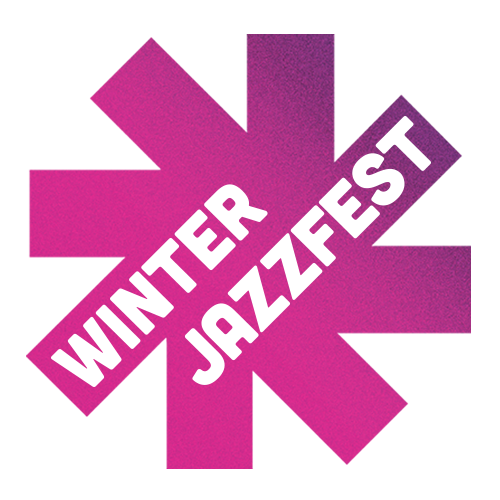The Pandemic: Moving Forward with Common Purpose
By Natalie Weiner
During jazz’s century, the music has seen so much peril as to be perceived as perpetually on life support. That perception is most frequently associated with aesthetic and commercial threats: the imagined harm wrought by shocking innovation, the dilution that comes with popularity, the struggle that comes without it.
But the genre, vast as it is, has survived massive external challenges as well. Wars dragged talented musicians away from their art and into the service, and limited the availability of recording materials. Natural disasters have often threatened its commonly accepted birthplace, New Orleans, and the people and places there that are both so intrinsic to it even today. And yes, pandemics have come and gone.
The 1918 influenza pandemic, the “most severe in recent history” according to the CDC, arrived a year after one of the first “jass” recordings was made in 1917. It posed an enormous threat to the burgeoning musical revolution for the same reasons we’re now familiar with: being in close proximity to others, as one would have been in an intimate New Orleans club, became dangerous. Louis Armstrong was 17 years old when the pandemic hit, and according to his autobiography, never got sick — but club closures around the city did “force [him] to take any odd jobs [he] could get,” as he wrote later.
Given the hurdles musicians have already overcome to make this music, it’s no surprise that many in the jazz world have greeted the coronavirus pandemic with some defiance. “How has the pandemic changed jazz? The short answer is, it hasn’t,” says Rio Sakairi, artistic director at New York’s Jazz Gallery. “What’s really at the core of who we are is not going to change over something like this.”
Yet there have been obvious challenges posed by the pandemic that included every aspect of music-making. Clubs could not safely open. Musicians could not gather to record, or travel to perform or collaborate, or teach their students. Festivals like Winter Jazzfest were not tenable, and even the 2022 edition had to be postponed. Organizations that support jazz artists and programming suddenly faced unprecedented demand for their services.
“[The need for assistance] was all consistent with the mission of the foundation, but when COVID-19 started, we were facing it on this heretofore unimagined scale,” says Joseph Petruccelli, executive director of the Jazz Foundation of America, a non-profit dedicated to supporting musicians since 1989.
What is surprising about the response to these massive problems isn’t all the ways people in the jazz community found to address them. Instead, it was the collaboration — the fact that jazzers of all stripes came together to find solutions — that was shocking. “I only like to use the word unprecedented now when it’s describing good things,” says Petruccelli, “and there was an unprecedented sense of cooperation throughout the [jazz] ecosystem.” He was able to form a consortium of label heads to brainstorm ways to help musicians, and eventually that group facilitated a JFA benefit album, Relief, released on Mack Avenue but featuring artists from six different labels.
One important collective action came with the formation of the Jazz Coalition, which Brice Rosenbloom (founder of Winter Jazzfest), Gail Boyd and Danny Melnick formed soon after the pandemic began. The Coalition includes dozens of musicians, each of whom donated personal funds in order to commission new work from their colleagues during the period when in-person performance was impossible. “We realize the need to selflessly pivot and unite the jazz community in an immediate effort to commission musicians and nurture their creativity,” Rosenbloom said at the time. Community and unity — two ideas that were rarely priorities in the jazz world prior to the beginning of the pandemic.
Of course, live-streaming and outdoor performance initiatives were crucial. The Jazz Gallery started almost immediately hosting informal online meetings with musicians, as well as online shows featuring musicians’ videotaped performances from their homes. Live-streaming from the venue itself began in June, and fans from around the world tuned in to watch artists like Vijay Iyer, Joel Ross, Ravi Coltrane and Becca Stevens. Though she cautions against thinking about silver linings of such a vast tragedy, Sakairi says, “the restrictions and the hurdles sort of gave us a direction.”
Individual artists like Cécile McLorin-Salvant and Brandee Younger devised their own modes of streaming performances from home, some paid, some free, some benefiting COVID-19 relief funds. Orrin Evans streamed a series of shows from his front yard in Philadelphia, performed in front of an intimate audience, on Facebook; stoop shows and park jams became ubiquitous in New York during the summer months.
Thanks to the vaccine, we enjoyed a period when venues slowly reopened and artists returned to the road. But the postponement of WJF 2022 and the rude emergence of Omicron as yet another unexpected roadblock to recovery have heightened the pandemic’s emotional and spiritual toll even more. Still, the jazz community found in physical isolation something that it often had been easy to feel alienated from: solidarity.
